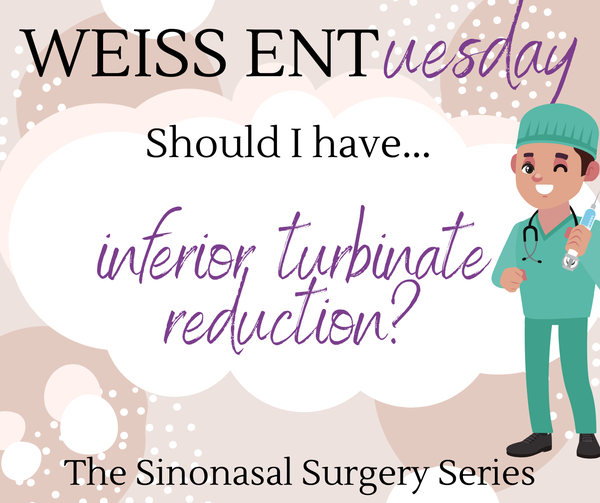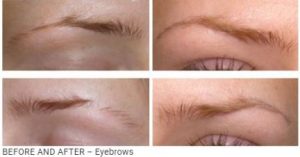Hello again!
Happy Tuesday. As our Atlanta Braves are getting ready for their playoff run, it’s amazing to think about what a season they’ve had and how many hurdles they’ve overcome—losing their best player, having injuries to their pitchers, being under .500 for most of the season, adding new players at the trade deadline, etc. We should all take a deep breath and marvel at how well they’ve done!
Speaking about taking a deep breath, it’s often not possible to do so when our nasal passages are blocked. This can lead to mouth breathing, bad breath, dry throat, snoring and poor sleep quality.
A common cause of nasal obstruction (and one of the easiest problems to remedy) is inferior turbinate swelling! The inferior turbinates are the hot-dog look alike structures that sit on the floor of the side walls of each nasal passage. The linings of the inferior turbinates are the only structures in the nose that actively change. This causes the turbinates to swell and shrink. These are the structures that allergy medicines try to address by keeping the turbinates shrunk down in hopes of creating more open nasal passages.
A simple trick to try to figure out if your inferior turbinates are the source of your nasal obstruction is to squirt Afrin (the over-the-counter medicine you should never use more than 3 days) in your nose. Try two puffs in each nostril twice a day for three days then stop. If this leads to easy airflow through both nasal passages, bets are great that those inferior turbinates are the source of your nasal symptoms!
As far as treatment is concerned, there are options. Certainly, medications may be tried in a maintenance way. They are often very successful at preventing the inferior turbinates from swelling and causing symptoms.
For those folks in whom medicines don’t work or those who don’t want to be on medicines forever more, there are procedures available that allow one to breathe through their nasal passages. Once healed, these procedures can improve airflow to a similar degree as when Afrin is used, but its permanent!
In our office, we have a device called the Celon. It is a radiofrequency energy delivery device meant to deliver targeted energy to the deep tissues of the inferior turbinates. The procedure is done in the office with the patient completely awake. We apply a topical numbing solution (no needles) to prevent pain. Once numbed, a needle attached to the Celon is inserted into the spongy tissue of the inferior turbinate and energy is delivered. This causes injury to the deep tissue. Over time, the injured spongy tissue is absorbed by the body and the lining of the inferior turbinate contracts down onto the underlying bone, giving one the results that they got with Afrin.
The procedure takes about thirty minutes to perform. There is typically no bleeding or pain. We do ask that people sleep elevated for the first three nights. Otherwise, there are no physical restrictions. We do see people back about three times after the procedure to clean the nose and ensure proper healing. Complete healing typically occurs by two months.
If you think your inferior turbinates could be the cause of your nasal obstruction, try the Afrin trial described above! If the trial works to improve your airflow, those inferior turbinates are likely the culprits!
Now You Nose It about the inferior turbinates!
Please let us know if you have any questions about this subject or if you’d like us to discuss any other topics!
‘Til next time, be kind, stay well, and keep on choppin’! Go Braves!!!
Sincerely,
Your Neighborhood Ear, Nose, and Throat Pals at WEISS ENT



